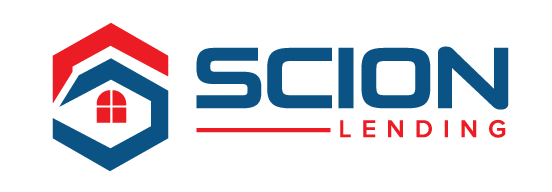What Are USDA Home Loans?
USDA mortgages are a great way for rural homeowners to get up to 100% financing — and several other benefits — on a new home! Whether you’re looking to buy, build, repair, renovate, or even relocate a home, a USDA rural home loan from Scion Lending can help you make your homeownership dreams come true.
Buying a home is now well within reach for rural residents thanks to USDA rural home loans. The mission statement of the USDA home loan program is “to improve the economy and quality of life in rural America.” It was created by the U.S. Department of Agriculture to assist low and very low income applicants in obtaining decent, safe, and sanitary housing in eligible rural areas. The housing provisions set in motion by the USDA mortgage program encouraged rural homeownership by providing payment assistance to increase an applicant’s repayment ability. The payment assistance provided by USDA rural home loans is a type of subsidy that reduces the mortgage payment for a short time, and the amount of assistance is determined by the adjusted family income.

How the USDA Home Loan Program Works
- To ensure the USDA loan process works as intended, the USDA will determine income restrictions depending on the area in which an applicant wishes to purchase a home.
- Loan underwriters are responsible for looking at the applicant’s gross income, income from any co-applicants, and any other adults who plan to live in the household.
- A loan underwriter will analyze the specifics of the applicant’s income and financial background.
- The applicant will need to submit copies of at least two years of IRS tax filings.
- The main requirement in securing a USDA mortgage is to show a clearly visible history of steady income.
- Self-employed applicants may need to provide three years of tax returns to establish a clear track record of average income.
Background and History of USDA Home Loans
People often wonder why the U.S. Department of Agriculture is involved with rural housing programs. The answer to this question goes back to the New Deal, as well as efforts in the 1930s and 1940s. The goal of the USDA mortgage program is to provide a better standard of living and a path to homeownership for rural residents. During the early 20th century, very few rural homes in the United States had indoor plumbing or electricity, and poverty was at an all-time high. Before the creation of the FHA and the Housing & Urban Development (HUD) programs, the U.S. Housing Act of 1949 created what would eventually be the first consumer USDA rural home loan program. This new program then placed direct responsibility at the USDA for appropriate funding. USDA financing was initially used for on-farm housing, however non-rural farm financing was eventually added in order to round out the program’s coverage.
The Housing Act of 1949 declares that every American deserves a “decent home and a suitable living environment.” Housing in a post-World War II era was in short supply, and many cities had houses that were in rapidly-deteriorating condition. To meet the goal of better and more-abundant housing, the following provisions of the Housing Act set the framework for the creation of the USDA home loan program.
The provisions of these titles were strongly influenced by the individual cities and their respective suburban areas. The Housing Act also recognized the shortages of readily-livable housing that characterized much of rural America. Through the Rural Housing Insurance Fund Program, established by the Housing and Urban Development Act of 1965, USDA mortgages can provide a path for rural home purchases, repair, and more. For the first time in U.S. history, the federal government was in charge of constructively shaping U.S. urban and suburban areas. As a result, state and local policies changed considerably. These changes affected social welfare programs, race relations and economic development decisions in addition to housing. The Housing Act of 1949 was significant and broad in its creation of a new federal role, but it was also instrumental in in establishing housing as a central policy focus. The act was instrumental in creating the modern USDA financing programs that make the American Dream of home ownership possible for millions of rural Americans across the country.
USDA Loans Information and Statistics
- USDA mortgages are designed to help spur homeownership in rural areas.
- The program provides “supervised credit,” including pre-loan and post-loan credit counseling to its borrowers to help them maintain their homes during financial hardship.
- The U.S. government guarantees 90% of the USDA mortgage principal as an encouragement to private lenders to make loans available to rural residents whose incomes range from 80% to 115% of the median county income.
- A USDA home loan may be up to 100% of market value or acquisition costs, whichever is less.
- USDA financing primarily benefits rural areas nationwide. The highest U.S. areas that receive benefits (in per-capita dollars) are in low-income areas.
- USDA rural home loan programs have built or assisted more than 4 million units since their creation.
- In 2014, the USDA invested almost $20 billion to help nearly 140,000 families buy and improve their homes.
- The largest and oldest low-income USDA mortgage program is the Section 502 loan for homeownership.
- The Section 502 USDA home loan has helped more than 2.1 million low-income families become homeowners.
- The Section 502 guaranteed loan program has financed more than 120,000 mortgages a year since its creation.
The most important feature of USDA rural home loans is that they allow for 100% financing of an eligible home’s purchase price. Federal Housing Administration (FHA) loans, by comparison, require a minimum of 3.5% down payment, adding thousands of dollars in upfront expenses that rural Americans simply can’t afford. The no money down feature of a USDA mortgage has provided many rural residents with the ability to buy a home who would otherwise be locked out of homeownership. USDA rural home loans only have one financing choice: a 30-year fixed rate mortgage. This program is the safest and most-proven mortgage term for USDA home loans. Limiting the program to this loan term improves the success of the program and ensures its availability to rural Americans in the future. Buying a home is one of the largest investments in a person’s life. A home is more than a financial investment¬¬ — it’s an investment in your share of the American Dream. The USDA home loan program works hard to provide a path to homeownership for eligible rural borrowers.
Frequently Asked Questions (FAQ) About Rural Home Loans
What is the first step in obtaining USDA financing?
How is eligibility for the program determined?
What financial information can I expect to disclose during the prequalification stage of the loan process?
How will I be evaluated for credit worthiness?
Can you explain the process of receiving the pre-approval letter?
I received my pre-approval letter. Does this mean that I qualify for a USDA mortgage?
When should I let my real estate agent know that I’m using a USDA rural housing loan?
What happens if I can’t negotiate the closing costs into my offer?
Is there anything I should know after I have made my offer?
How long can I expect the closing process to take?
USDA Loans Continue to Provide a Path to Homeownership
The need for USDA home mortgages remains prevalent in the United States. The program provides a path to homeownership for rural families that truly have no other way to make affordable homeownership a reality. The homeownership opportunities provided by USDA rural home loans continues to provide prosperity and creates thriving communities in the process. Improving the quality of life and establishing a path to homeownership is the ultimate goal of the USDA mortgage program. It is an essential part of our country’s efforts to provide decent and quality homes for rural Americans.
What Are The Benefits Of USDA Home Loans?
A USDA rural home loan from Scion Lending provides many benefits:
- You may qualify for up to 100% financing. The loan amount may not exceed 100% of the home’s appraised value.
- No down payment is required.
- Your interest rate will be fixed, keeping your monthly payments consistent throughout the loan term.
- Closing costs can be paid by the seller or included in the loan.
- The program is not limited to first-time homebuyers.
- There is no maximum purchase price, though qualifying ratios and income will determine eligibility.
Finding An Eligible Home
To qualify for a USDA rural home loan, you must meet certain criteria as defined by the USDA:
- Applicants for USDA home loans may have an income of up to 115% of the median income for an area.
- In addition to area median income requirements, you must meet the income restrictions for your respective county.
- You must already be without adequate housing, but be able to afford your mortgage payments, including insurance and taxes.
- You must have a reasonable credit history.
- Loans have a 30-year term.
Finding An Eligible Home
In addition to the personal eligibility requirements, the home you’re looking to finance must be located in a designated USDA rural area and be one of the following:
- An existing home.
- New construction.
- A modular home.
- Planned unit development (PUD).
- An eligible condominium.
- A new manufactured home.
- Certain home repairs and improvements may be included in the loan.
- Investment properties are not eligible.
Related Information
When you purchase a house, you want the best experts by your side. Find out about the benefits...
Our USDA Streamline Refinance program gets you to closing quicker and more efficiently! Learn...
Wondering what is an FHA loan? Learn about our FHA home loan requirements and find out if an FHA...
